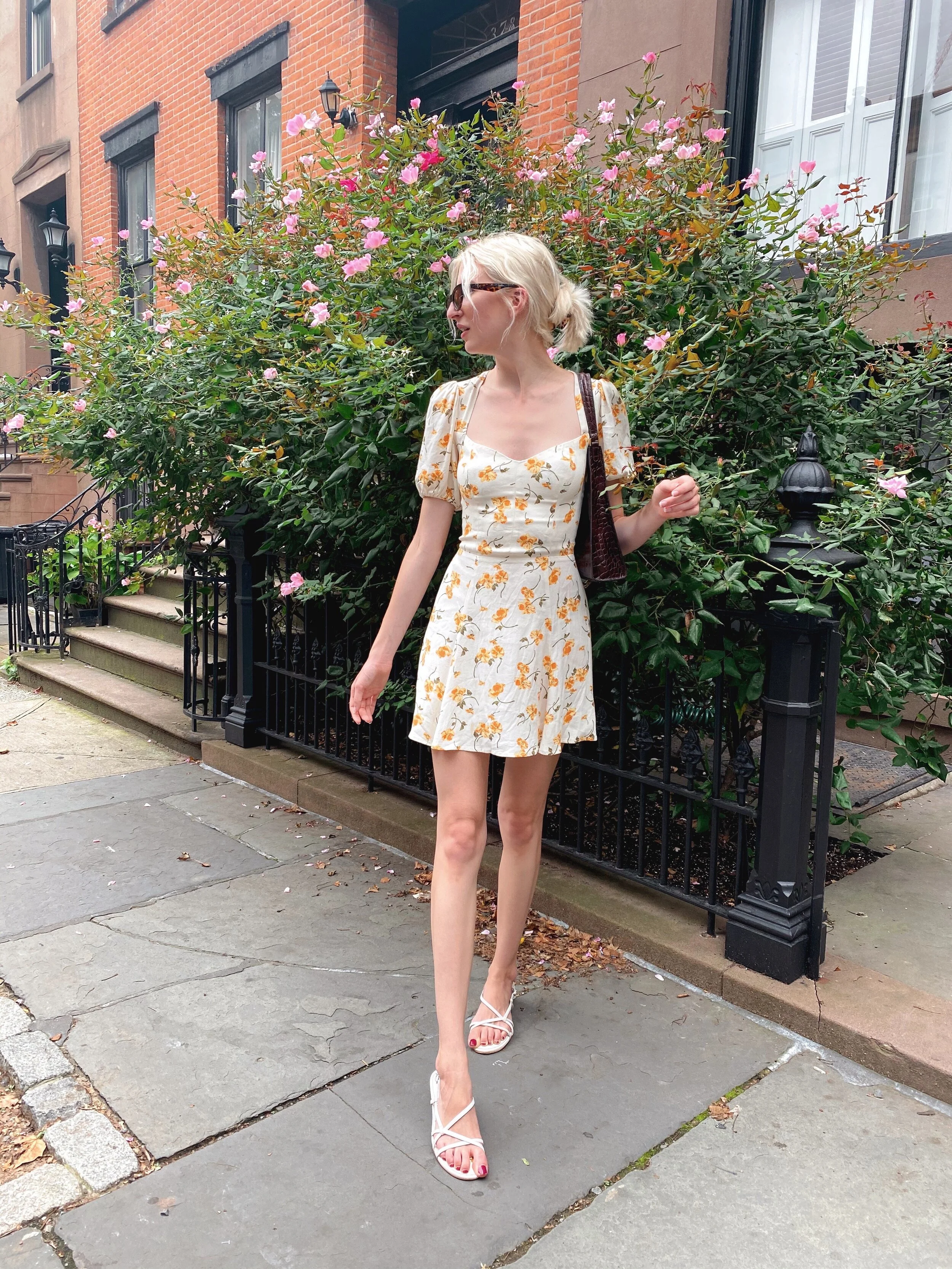Why I Quit Fast Fashion, And You Should Too
If you’re reading this, you may have heard of some people quitting fast-fashion, or maybe you’ve already done do yourself! Whatever the reason, I’m so glad you’re interested in knowing more about where clothes come from and making more conscious choices. It’s so easy to ignore all the warning signs when you are accustomed to the overflow of cheap trendy clothing, but the cost of overconsumption is finally coming to light.
Reality is, the fashion industry produces 10% of all humanity's carbon emissions and is the third most polluting industry, right behind fuel and agriculture. What’s more, clothing production has almost doubled since 2000, and being thrown away at a far faster rate. The equivalent of one garbage truck full of clothes is burned or dumped in a landfill every second.
I’ve been shopping fast fashion practically my entire life. I remember walking into a Forever21 for the first time in middle school and being ecstatic at the rows and rows of trendy items that I could afford to buy armfuls of with my meager babysitting money. Well into high school and college, I had discovered brands like Zara that made cheap copies of runway styles in record time, and as an aspiring fashionista, I ordered HAULS.
It wasn’t until my later years in university at New York’s Fashion Institute that I took classes in textile science, global supply chains, and fashion sustainability that I realized the impact that the industry had on our environment, but even then, quitting the addiction to new, trendy, inexpensive clothing seemed nearly impossible, especially for an underpaid fashion assistant.
But the more I read, and the longer I worked in fashion, I decided enough is enough, and decided to quit fast fashion.
Now, when I look at an $8.00 t-shirt from Target, or a $30 dress at Zara I don’t see a garment, I see petroleum being soaked in chemicals and turned into plastic thread to be woven, I see gallons and gallons of water, chemicals, and pesticides used to grow cotton, I see exploited workers paid pennies and working in abominable conditions, I see toxic dyes and metals poisoning local water supplies, I see microplastics being washed into oceans by laundering synthetic fabrics and then swallowed by wildlife, and I see that garment being thrown in a landfill to sit for millions of years after being worn a meager 7 times.
But What Is Fast Fashion?
In the very beginning of the modern fashion industry, designers had 2 seasons, Fall/Winter and Spring/Summer. Those who couldn’t afford designer names had local seamstresses make similar items, and clothing was a fairly large expense for most people.
By contrast, the modern designer industry has 4 seasons, mid-priced retailers often have around 8, and fast fashion typically has anywhere from 12-24 seasons per year. In some ways, fast fashion has democratized the apparel industry, making it possible for lower income individuals to dress in the same styles as high end designer fashion, however this has also created a culture of disposable consumerism. It has created the idea that you need to be wearing something new all the time, and so wardrobes end up being a constant cycle of cheap trendy clothing.
You have probably heard of the largest and most obvious fast-fashion offenders like H&M, Zara, Forever21, and Topshop, as well as newer ecommerce fast-fashion like Shein, Nasty Gal, and ASOS. But then there’s the one’s you don’t expect like Urban Outfitters, Anthropologie, Free People, J.Crew/Madewell and so many more. These are typically higher priced retailers, but they still use tons of synthetic fabrics and have little to no supply chain transparency. The last group are mass-market stores like Target and Walmart that sell huge volumes of cheap basics.
How Do I Spot Fast Fashion?
Sometimes it can be hard to spot if a brand is fast-fashion. Here are a few ways to spot them:
Low Price Point
It’s nearly impossible to pay workers a living wage selling garments for under $20, but even if items are more expensive, if there’s no transparency in manufacturing, it’s likely not from a reputable; source
Synthetic Materials
Fast-fashion brands use synthetic fabrics like polyester because they’re cheap and convenient. The biggest one’s to look for are polyester, nylon, and acrylic.
Read More: Sustainable Fabrics 101
Made in a third world country
Often these will be made in countries like Bangladesh with no worker safety certifications or supply chain transparency
A FEW MORE REASONS TO DITCH FAST-FASHION
LABOR EXPLOITATION
More than almost any other, apparel manufacturing relies heavily on cheap labor. Most of this falls on young women in third world countries, who work in terrible conditions for an average of $3 USD a day (and that’s if they get paid at all). A great resource to learn more is the documentary The True Cost, which is free on Amazon Prime or $2 to rent. So when you see a $5 tshirt, how much can the person sewing it be making?
HARMFUL FOR THE ENVIRONMENT
Most fast-fashion is made from synthetic (ie fossil-fuel based) fibers that are harmful to produce and then cannot biodegrade. The dyes and other chemicals that are used are often toxic, and just dumped into local water systems. Nearly 20% of global wastewater was produced by the fashion industry, especially for water-intensive processes like synthetic fiber production and tanning leather.
Read More: Sustainable Fabrics 101
CREATES A CULTURE OF OVERCOMSUPTION
How many times have you walked into a full closet and thought ‘I have nothing to wear’ or bought a new outfit to wear solely for one event. Fast fashion has created a culture that tells us clothing is disposable, and you should never be caught wearing the same thing twice. The average American only wears a garment 7 times before throwing it away, and generates 70 pounds of textile waste a year. That may not sound like a huge number alone, but In 2019, 208 million pounds of textile waste was generated by single-use outfits alone.
ITS ACTUALLY MORE EXPENSIVE
If you think about cost-per-wear, and the total amount of money you spend on clothes per year, constantly buying new terms that will fall apart after a few wears becomes far more expensive than buying just a few well made and/or secondhand items. It may seem like you’re getting a great deal on that $10 top, but buying 10 cheap tops that will fall apart actually becomes more expensive than one $60 top that will last you years to come.
CULTURAL APPROPRIATION & STOLEN DESIGNS
Big-name fast fashion companies are the worst offenders of stealing designs from small independent creatives, often whom are people of color, and selling cheap versions as thier own. Shein is regularly caught directly copying the designs of small designers, like this recent one from Mariama Diallo of Sincerely Ria. These small designers don’t have the money or legal teams to challenge billion-dollar corporations, and so retailers typically get away with ripping off artists.
It can be extremely difficult to break the habit of scrolling through apps and filling your cart full of the latest trends for less than the price of brunch with your friends, but I hope the reasons above will make you reconsider hitting add to cart, and inspire you to seek out more eco-friendly and humane options.
xo,
Audra
Read Next::












